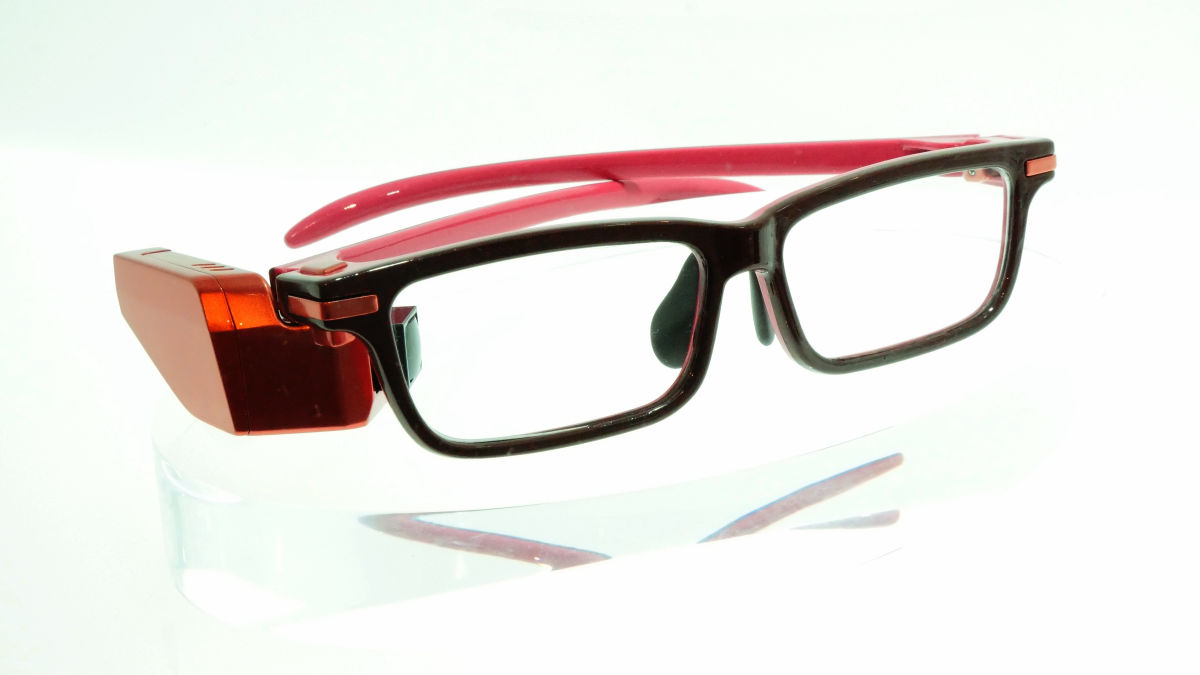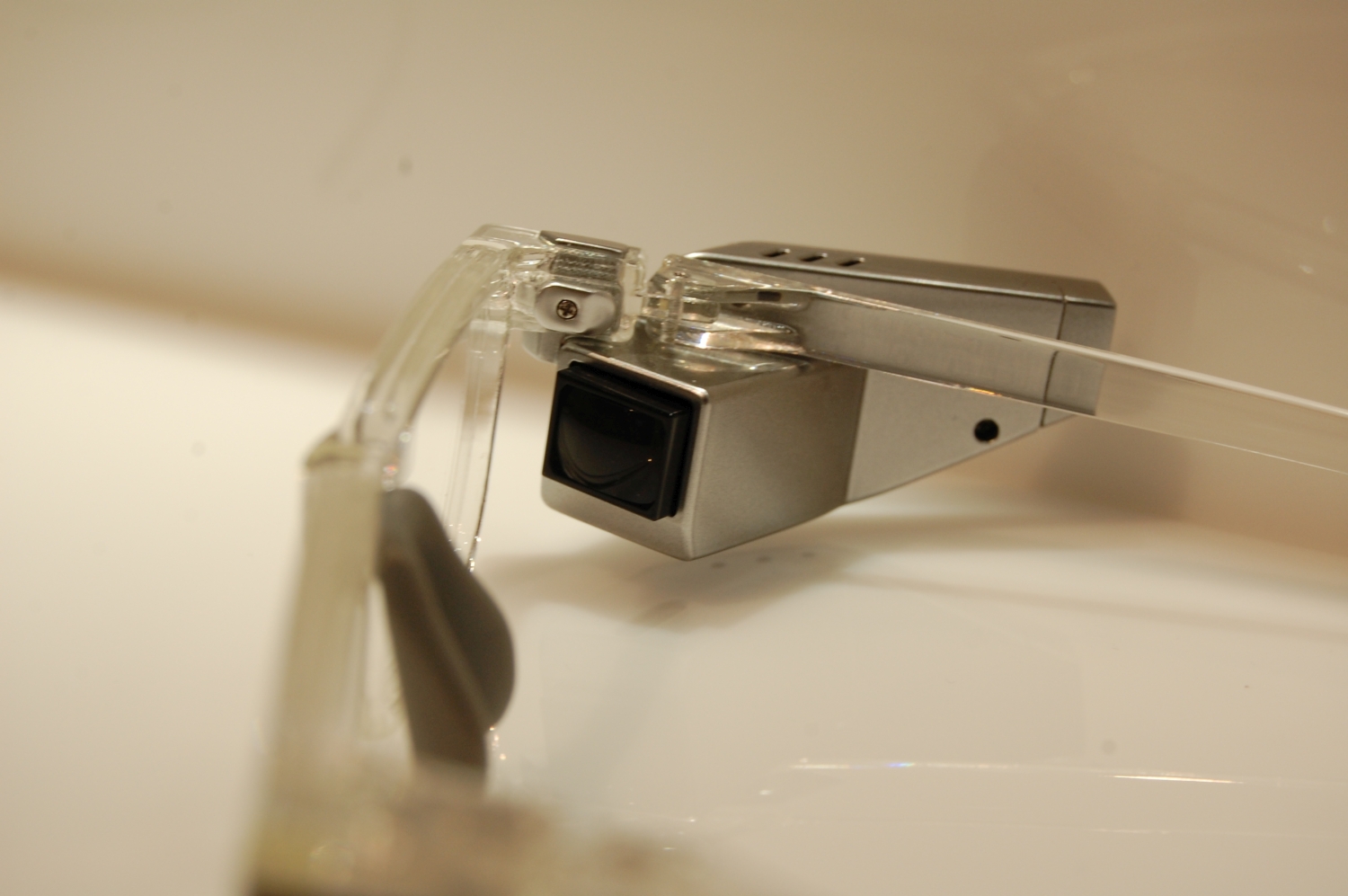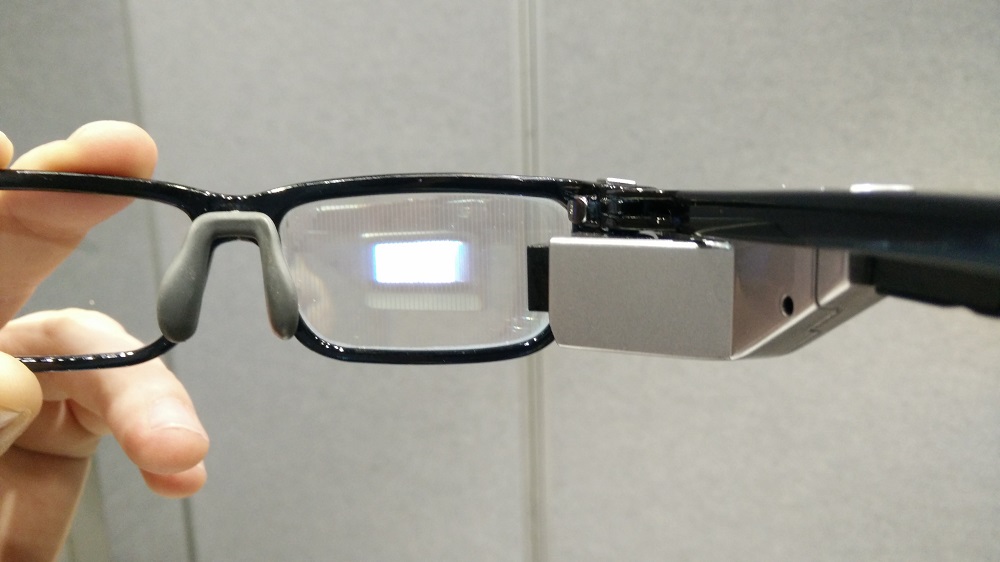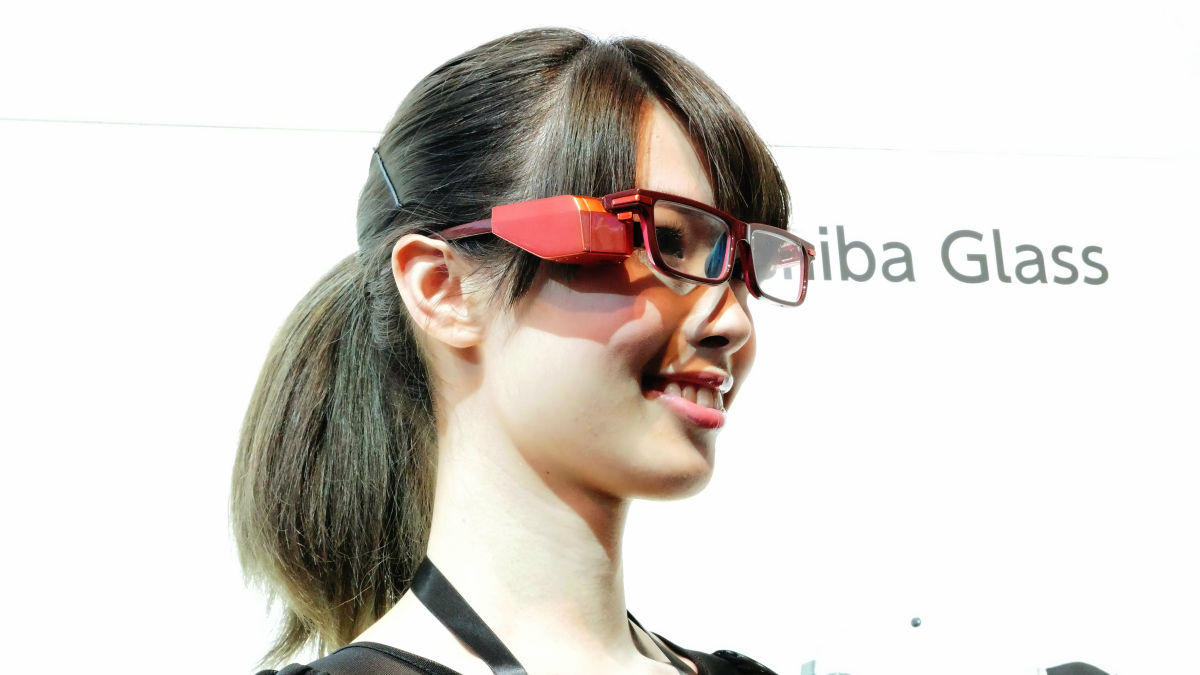Difference between revisions of "Toshiba Glass"
(created) |
(added pictures) |
||
| Line 1: | Line 1: | ||
| + | [[File:ToshibaGlass_1.jpg|thumb|right|alt=Toshiba Glass|Toshiba Glass.]] | ||
Toshiba Glass is currently in prototype stage. Changes are expected before it becomes a finalized product for the market. The device looks like an ordinary pair of glasses with a tiny projector clipped on the side, which project images onto the reflective glass lens fitted into the frames. The image appears in the middle of field of vision. [1] The projector can be removed from the foldable frame. The device is connected to a smartphone by cable and draws information and power from it. This makes the device lightweight (42 grams) and comfortable to wear. It is not equipped with a camera. Applications for the device are still under development. | Toshiba Glass is currently in prototype stage. Changes are expected before it becomes a finalized product for the market. The device looks like an ordinary pair of glasses with a tiny projector clipped on the side, which project images onto the reflective glass lens fitted into the frames. The image appears in the middle of field of vision. [1] The projector can be removed from the foldable frame. The device is connected to a smartphone by cable and draws information and power from it. This makes the device lightweight (42 grams) and comfortable to wear. It is not equipped with a camera. Applications for the device are still under development. | ||
| Line 9: | Line 10: | ||
Industrial, retail, security, medical and healthcare use; entertainment, lifestyle, sports. | Industrial, retail, security, medical and healthcare use; entertainment, lifestyle, sports. | ||
| + | [[File:ToshibaGlass_2.jpg|thumb|right|alt=Toshiba Glass detachable projector|The projector is detachable.]] | ||
=== Company & People === | === Company & People === | ||
| Line 17: | Line 19: | ||
Directors: Hisao Tanaka, Masahiko Fukakushi, Toshio Masaki, Keizo Maeda, Makoto Kubo, Hidejiro Shimomitsu, Kiyoshi Kobayashi, Naoto Nishida, Fumiaki Ushio, Seiya Shimaoka; Outside Directors: Hiroyuki Itami, Kiyomi Saito, Ken Shimanouchi, Sakutaro Tanino. | Directors: Hisao Tanaka, Masahiko Fukakushi, Toshio Masaki, Keizo Maeda, Makoto Kubo, Hidejiro Shimomitsu, Kiyoshi Kobayashi, Naoto Nishida, Fumiaki Ushio, Seiya Shimaoka; Outside Directors: Hiroyuki Itami, Kiyomi Saito, Ken Shimanouchi, Sakutaro Tanino. | ||
| + | [[File:ToshibaGlass_3.jpg|thumb|right|alt=Showing how the virtual image is projected onto the glass.|The virtual elements are projected onto the glass.]] | ||
== Important Dates == | == Important Dates == | ||
| Line 33: | Line 36: | ||
<!-- Describe in detail whether the technology aims to enhance human cognition, i.e. to improve human abilities beyond what is considered normal, and/or if it is also applicable as a form of treatment or therapy, i.e. it can serve to cure patients or restore abilities that do not perform as they would in a healthy person --> | <!-- Describe in detail whether the technology aims to enhance human cognition, i.e. to improve human abilities beyond what is considered normal, and/or if it is also applicable as a form of treatment or therapy, i.e. it can serve to cure patients or restore abilities that do not perform as they would in a healthy person --> | ||
| + | [[File:ToshibaGlass_4.jpg|thumb|right|alt=A Toshiba stand hostess wearing Toshiba Glass|A Toshiba stand hostess wearing Toshiba Glass.]] | ||
== Public & Media Impact and Presentation == | == Public & Media Impact and Presentation == | ||
Revision as of 10:04, 24 July 2015
Toshiba Glass is currently in prototype stage. Changes are expected before it becomes a finalized product for the market. The device looks like an ordinary pair of glasses with a tiny projector clipped on the side, which project images onto the reflective glass lens fitted into the frames. The image appears in the middle of field of vision. [1] The projector can be removed from the foldable frame. The device is connected to a smartphone by cable and draws information and power from it. This makes the device lightweight (42 grams) and comfortable to wear. It is not equipped with a camera. Applications for the device are still under development.
Contents
Main characteristics
No technical specifications available yet.
Purpose
Industrial, retail, security, medical and healthcare use; entertainment, lifestyle, sports.
Company & People
Toshiba Corporation was founded in 1875. Its headquarters are in Tokyo, Japan, with offices worldwide.
President and CEO: Hisao Tanaka; Board of Directors: Masashi Muromachi, Chairman of the Board and Director; Norio Sasaki, Vice Chairman of the Board and Director;
Directors: Hisao Tanaka, Masahiko Fukakushi, Toshio Masaki, Keizo Maeda, Makoto Kubo, Hidejiro Shimomitsu, Kiyoshi Kobayashi, Naoto Nishida, Fumiaki Ushio, Seiya Shimaoka; Outside Directors: Hiroyuki Itami, Kiyomi Saito, Ken Shimanouchi, Sakutaro Tanino.
Important Dates
- Prototype first presented at CEATEC Japan 2014, followed by CES 2015.
- It won the Mobile Technology award at CEATEC Japan 2014. [2]
- Toshiba announced the release of Toshiba Glass during the second half of 2015 only as a customized solution for enterprises.
- The company plans to release a consumer version in the future, but the release date is not yet specified.
Ethical Issues
Health Risks
Enhancement/Therapy/Treatment
Public & Media Impact and Presentation
The existing reviews are based on Toshiba Glass demonstration at CEATEC Japan 2014 and CES 2015. The device is praised for being lightweight, for clear full-colour image, and design. Listed as shortcomings are cable connection to external device and lack of camera. [1] [3] [4]



